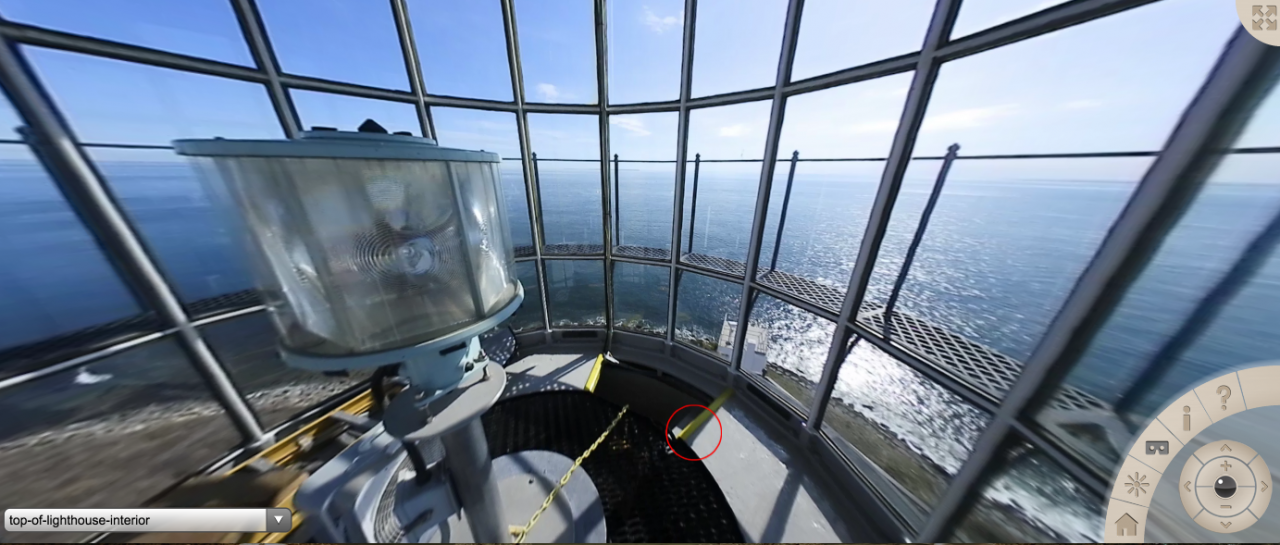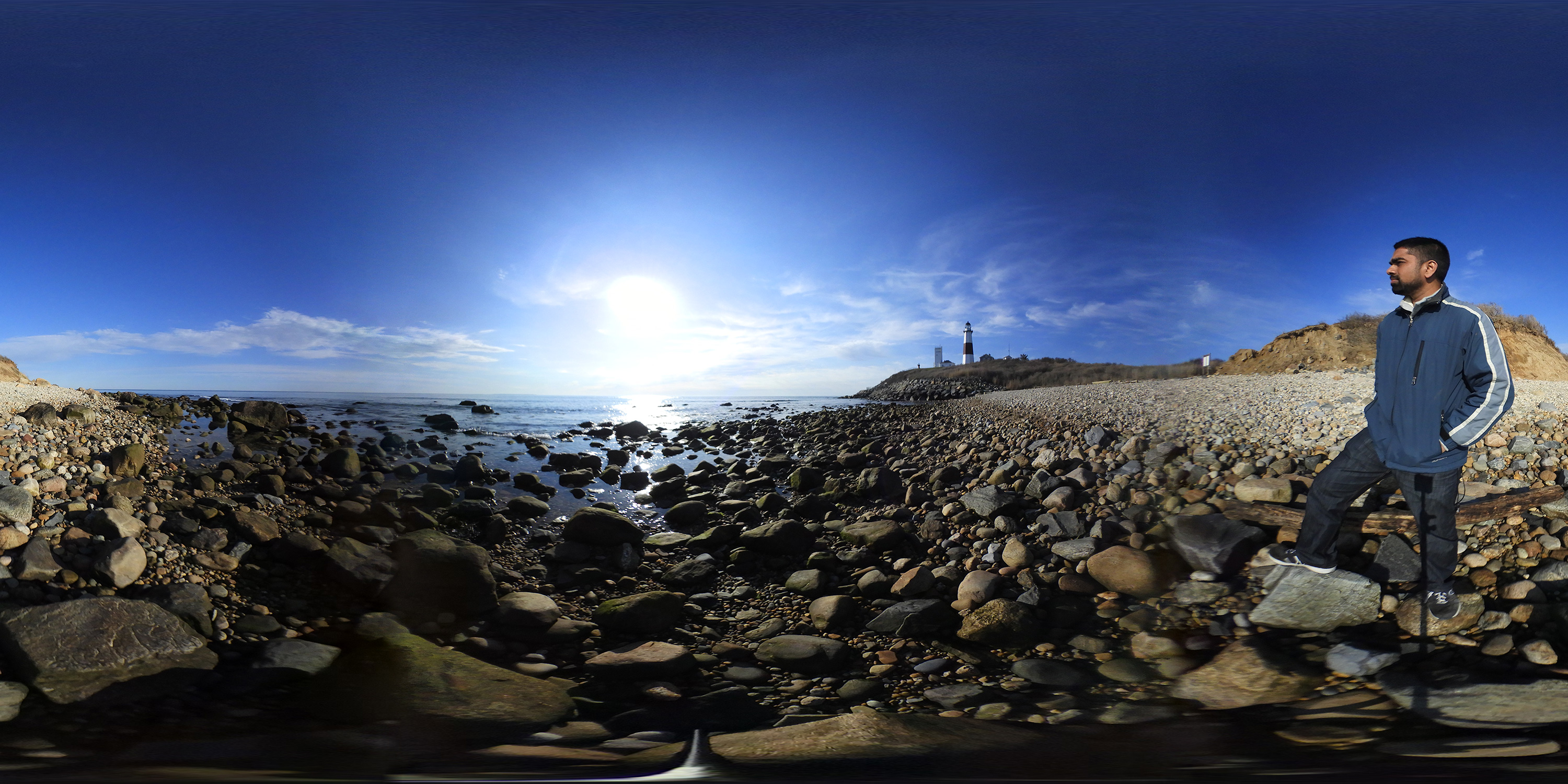Montauk lighthouse – a 360 video and Panotour (final project doubleheader, Wasim Ahmad)
For the final project I created two different types of interactive experiences for people interested in visiting (or unable to visit) the Montauk Lighthouse, New York's first lighthouse located at the very end of the southern tip of Long Island.
Montauk has been my "happy place" for a while, and so it was nice to come back and create an experience that one can use in a headset to feel like they were there - for instance, if you are disabled or are otherwise unable to make it up the narrow staircase, now you can use a VR headset and at least feel like you're getting some of the experience.
This is a package of two different experience, the first is a Panotour (a panoramic tour created in Kolor Panotour software) that you can load up on a web browser. As a fair warning, you will need a fast connection, a very fast computer, and Chrome or Firefox for the best experience. I've tried it on a lot of different setups and that seems to be my experience. You can check this out here at this link or click the picture below: www.wasimonline.com/montauklighthouse/

You can build and customize controls and clickable hotspots into a Panotour - here you can look around or click on the red spot to walk back down the steps.
There's a lot of documentation on how to use Kolor Panotour over on their website though the words are not very helpful and the YouTube videos they show are pretty dry. It works, though the software is not at all intuitive. It took me a while to figure out how to get controls beyond clickable hotspots, but now that I did, you can move around much easier, hide the interface, or jump to anywhere in the tour at any time. Pretty useful stuff. If you saw the earlier versions of this project, it was pretty ugly and the controls were challenging, to put it charitably. This version is a lot better. I can see why this software is so expensive (Thanks professor!), it can do a lot without requiring you to know tons of code.
While the Panotour is primarily geared toward web browsers (I think video support is still rudimentary, it seems to work better with still photos), here's a video experience I created as well, narrated by lighthouse historian Henry Osmers:
This experience can be viewed on headsets and on browsers, so it's a different experience than the Panotour is.
One thing this project has revealed to me is how limited we are with this first generation technology - for instance, resolution on the video is so low, unfortunately, that while you're going through the lighthouse museum it's difficult to read any of the text when you zoom in. Unfortunately, resolution limitations seem to be the culprit here - and having a GoPro Omni rig might have helped, but even then I'd imagine it would be difficult to read things. I can only imagine how this will look with cameras and computers of three years from now. I used a Nikon KeyMission 360 and edited on Final Cut Pro using the Dashwood Cinema Tools that I referenced in this post.
Finally, a few acknowledgements - a big thank you to Henry Osmers and Johnson Nordlinger at the Montauk Lighthouse. Henry was kind enough to provide a lot of historical background for my own knowledge and the video, and Johnson walked me all over the grounds and even in to places the public can't go to in order to get the shots (she had to use a drill to open the very heavy wood door on the fire control tower, and it was super-difficult to get in and out of there). This would not have been possible without their help.
If you're a future student reading this post ...
So with that, some advice for future students in this class reading this blog - have a backup plan, and start working early. I spent a month and a half on a story that was going to be my final project - the opening of a PriceRite supermarket in a food desert in Syracuse. I spent a lot of time going to the construction site, employee trainings, etc. and then, a couple of weeks before the grand opening, which was a major part of the project, they moved the date up to the same day as my brother's wedding. No way to get a major project out of this and miss the most important day of the shoot. So I gave up that project (but still finished it thanks to Aubrey Moore filling in for me at the grand opening, big shoutout to her) but I turned my attention to Montauk Point. I'm really glad I did. I've been going to Montauk for years and shooting tons of photos, but it was nice to be able to do something so that others can share in the experience. This means a lot to me.
But seriously. Start early. Shoot often.


COMMENTS